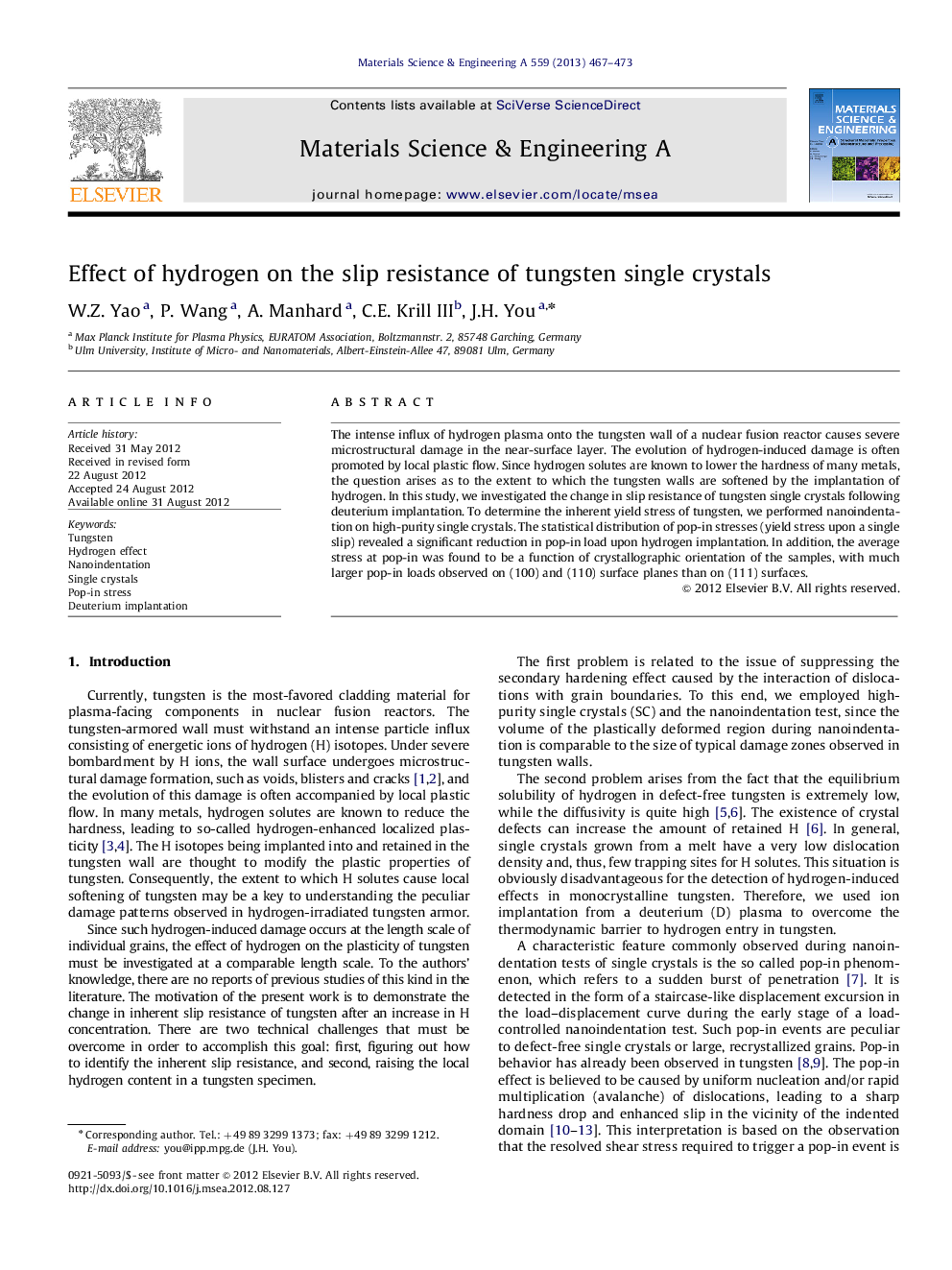| Article ID | Journal | Published Year | Pages | File Type |
|---|---|---|---|---|
| 1576686 | Materials Science and Engineering: A | 2013 | 7 Pages |
The intense influx of hydrogen plasma onto the tungsten wall of a nuclear fusion reactor causes severe microstructural damage in the near-surface layer. The evolution of hydrogen-induced damage is often promoted by local plastic flow. Since hydrogen solutes are known to lower the hardness of many metals, the question arises as to the extent to which the tungsten walls are softened by the implantation of hydrogen. In this study, we investigated the change in slip resistance of tungsten single crystals following deuterium implantation. To determine the inherent yield stress of tungsten, we performed nanoindentation on high-purity single crystals. The statistical distribution of pop-in stresses (yield stress upon a single slip) revealed a significant reduction in pop-in load upon hydrogen implantation. In addition, the average stress at pop-in was found to be a function of crystallographic orientation of the samples, with much larger pop-in loads observed on (100) and (110) surface planes than on (111) surfaces.
